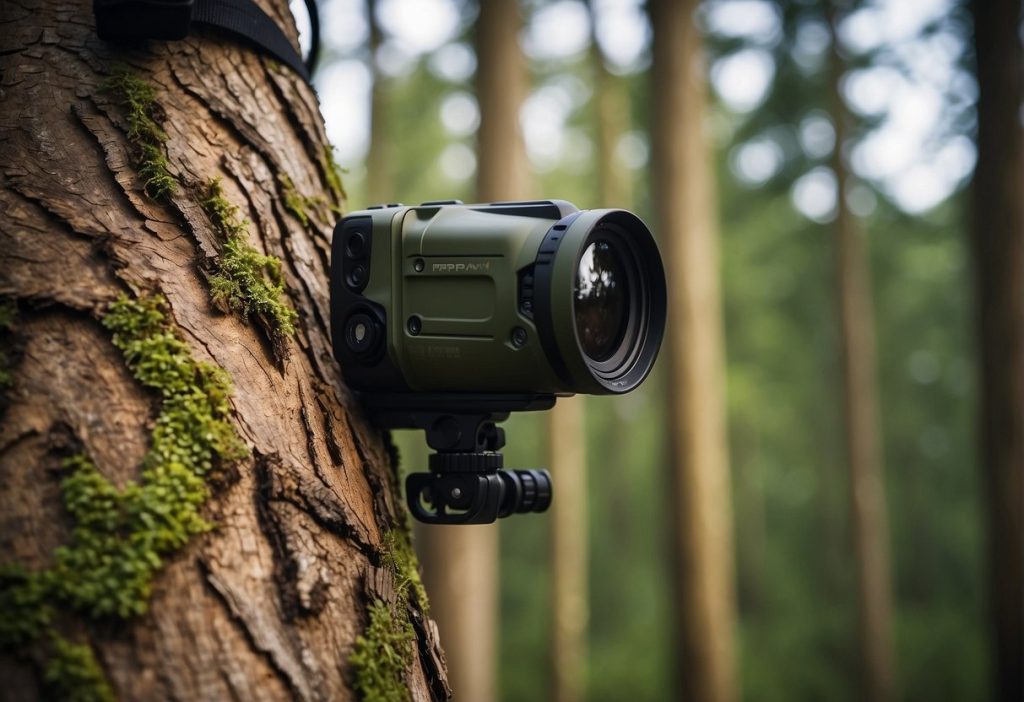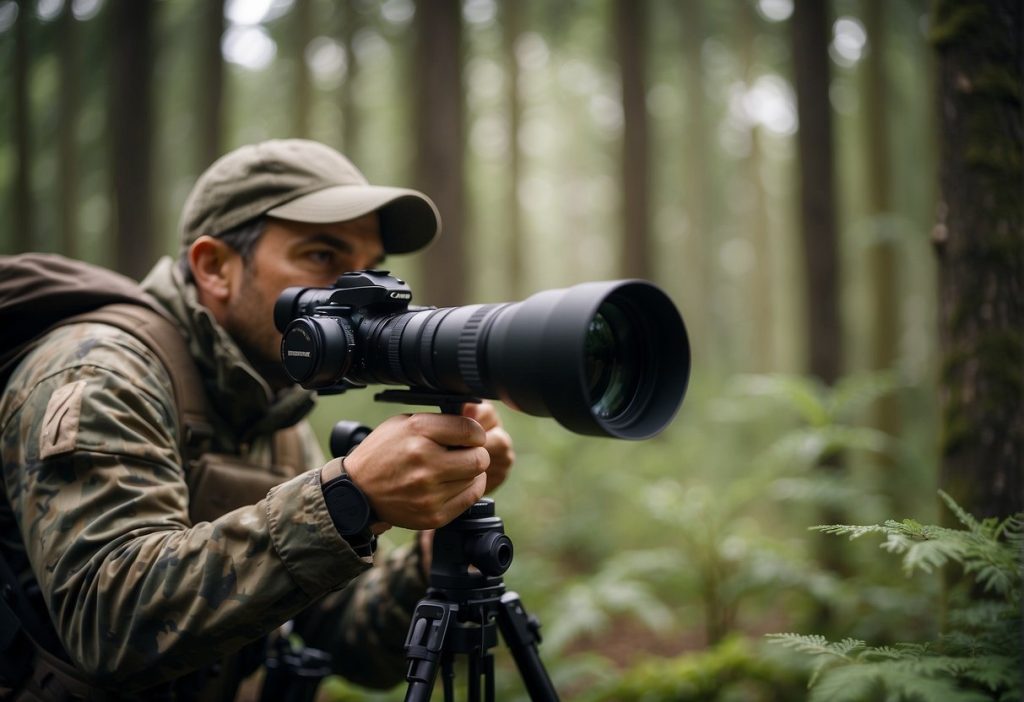
As an avid bow hunter, I understand the importance of capturing memorable moments during a hunt. It’s not just about the thrill of the chase; it’s also about preserving our experiences and sharing them with others. To achieve that, a reliable and high-quality camera specifically designed for bow hunting is essential.
There’s a wide range of cameras available on the market, each offering unique features and capabilities that cater to different needs and preferences. When choosing the perfect camera for my bow hunting adventures, I focus on factors such as durability, video quality, ease of use, and mounting options. This ensures that I can seamlessly record my hunts without compromising my ability to focus on the actual hunting aspect.
With the right camera in hand, bow hunting becomes a richer experience as I can easily document my hunts and improve my techniques by analyzing the high quality footage. Whether I’m capturing the serene beauty of the woods or the adrenaline-fueled shot that lands a trophy, selecting a camera tailored to the unique demands of bow hunting is paramount.
Choosing the Right Camera for Bow Hunting
Action Cameras vs Trail Cameras
When it comes to choosing a camera for bow hunting, it’s essential to understand the difference between action cameras and trail cameras. Action cameras, like the popular GoPro Hero, are compact, lightweight, and designed to be mounted on various gear to capture your hunting experience from different angles. These cameras typically offer features such as image stabilization, 4K resolution, and waterproof capabilities.
On the other hand, trail cameras, like Spypoint, are primarily used for scouting and keeping an eye on game movement patterns. They can be camouflaged with designs like the Ion CamoCam Realtree and are usually mounted on trees or placed in strategic locations.
Key Camera Features
When selecting a camera for your bow hunting adventures, consider the following key features:
- Resolution: A higher resolution, such as 4K, provides better video quality and detail. This is particularly important for capturing precise shots and reviewing footage.
- Zoom: A camera with a good zoom capability, like the Tactacam cameras, allows you to closely capture and analyze your target.
- Battery life: Longer battery life is crucial when spending extended periods outdoors hunting. Some cameras have up to a one-year battery life.
- Image stabilization: This feature helps you capture smooth footage even during fast-paced movement or windy conditions.
- Durability and waterproofing: Your camera should be able to withstand the rigors of hunting and harsh weather conditions.
Camera Mounting Options
To get the best footage, it’s essential to have a variety of mounting options for your camera. Some popular choices include:
- Bow mounts: Attach your action camera directly to your bow to capture footage from the same perspective as your line of sight.
- Tree mounts: Use a tree head mount to position your trail camera for scouting purposes or an action camera to record various angles of your hunt.
- Tripods and camera arms: These accessories provide stability and allow for smooth panning while filming your hunting experience.
As you can see, selecting the right camera for bow hunting involves understanding the differences between action cameras and trail cameras, evaluating essential features, and considering various mounting options. By finding the perfect balance among these aspects, you’ll be well on your way to capturing impressive footage of your bow hunting adventures.
Capturing the Hunt
Easy Camera Operation Techniques
When it comes to recording hunts, I’ve learned that picking the right camera is crucial. Some good options are camcorder style camera and DSLRs, as they offer easy-to-use functionality and high-quality footage, essential for small hunting video camera. As a hunter, it’s crucial to know how to operate your chosen camera effectively in various conditions.
One useful technique I’ve found is using slow motion recording to capture the intricate details of my shots. Having a wider field of view is also essential, as it allows me to follow my target and record the entire process seamlessly. While using a remote can make it easier to control the camera from a distance, it’s good practice to remember to charge the remote and pack extra batteries or USB cables during hunts.
Considering bowhunting can often move at a fast pace, having quick access to your camera is crucial. I recommend using a camera strap or camera arm, to ensure the camera is always ready at a moment’s notice.
Filming Strategies for Different Game
When filming different types of game, I adjust my strategies depending on the unique perspective and challenges each hunt presents. Here are a few techniques I use for different game:
Deer:
- Set cameras at a distance to avoid spooking the deer
- Utilize tree saddles for higher vantage point
- Take advantage of morning and evening hours when deer are most active
Elk:
- Film from ground level, using a tripod for stability
- Keep the wind direction in mind and position the camera downwind to avoid detection
- Be ready to utilize zoom when elk are at a distance
Turkey:
- Use multiple cameras to cover a broader area and avoid blind spots
- Place cameras at a lower angle to better capture the action
- Remain as still as possible, as turkeys are highly reactive to movement
By using these tactics, I’ve been able to create captivating bow hunting footage from your own deer hunt. Whether I’m using a video camera, app, or connected device, following these tips has helped me produce professional-looking content worthy of sharing with fellow hunters.
Optimizing Camera Performance

Enhancing Photo and Video Quality
To capture the best quality images and videos during bow hunting, it’s important to adjust the settings on your camera. I recommend setting the camera to the highest resolution possible to ensure crisp and clear results. Make sure your camera comes with good image stabilization technology to prevent shaky footage.
Another key aspect is the motion detection feature. It’s crucial to select a camera with a good trigger speed which ensures high quality photos when the camera detects movement. For example, cameras from brands like Cuddeback and Wildgame Innovations offer fast trigger speeds.
In addition, I recommend turning off your camera’s Wi-Fi capabilities when not in use, as this can impact photo quality by causing interference.
Extending Battery Life and Storage
To extend the battery life of your camera, always use high-capacity, rechargeable batteries. Also, consider carrying a portable power bank to ensure you have the needed power for extended periods of time. Make sure to turn off unnecessary features such as Wi-Fi and continuous recording to conserve battery life.
For storage, use a high-capacity memory card that can handle a large amount of data. Depending on your recording preferences, you may need a card with at least 64 GB of storage.
To help you organize your gear, here’s a checklist of essentials:
- High-capacity, rechargeable batteries
- Portable power bank
- High-capacity memory card
- Camera with image stabilization technology
- Quality camera with fast trigger speed
By following these tips, you can ensure optimal camera performance during your bow hunting adventures while capturing stunning photos and videos.
Advanced Camera Equipment and Techniques
Accessorizing for Bow Hunting
When it comes to capturing my bow hunting adventures, I have found that accessorizing my camera gear is the key to getting those perfect shots. Be it a DSLR, a video camera or even a smartphone, investing in some quality accessories can greatly improve my chances of capturing stunning footage.
First and foremost, a tripod is essential for stabilizing my camera to avoid blurry and shaky footage, especially when using a camera with an 8x zoom lens or higher. A head strap or harness may also be useful for hands-free recording in certain situations, particularly when stalking prey from a ground blind or tree stand.
In addition, a remote for my camera comes in handy when I don’t want to risk any sudden movements or noise. Wide-angle lenses or a versatile zoom lens can help to capture the full spectrum of my hunts, be it a close-up of my trusty compound bow package or a wide-angle shot of the landscape.
Camera Gear List:
- Tripod
- Head Strap
- Remote
- X Zoom Lens
- Wide-Angle Lens
- Fisheye Lens
Modern Camera Technologies for Hunters
As for the latest camera technologies, there are several options on the market that cater specifically to bow hunters, such as the Tactacam 5.0 Hunting Action Camera. This camera offers image stabilization, a slim profile, and long battery life – crucial features for capturing high-quality footage in the unpredictable conditions of the wild. Additionally, its construction is weatherproof and shockproof for added durability.
Another popular option for capturing a unique perspective is the Insta360 series, which offers 360-degree cameras to record every angle of my hunts. Moreover, most modern hunting action second angle cameras feature a camo design to blend seamlessly with the environment, ensuring that my camera gear does not give away my position.
To sum it up, whether I’m using a crossbow or a conventional compound bow, technology has provided me with a multitude of advanced camera equipment and techniques that help me document my bow hunting experiences. As a bow hunter, my focus is always on capturing the essence of my adventures, and with the right combination of best cameras, lenses, and accessories, I can confidently showcase the thrill and excitement of each hunt.
